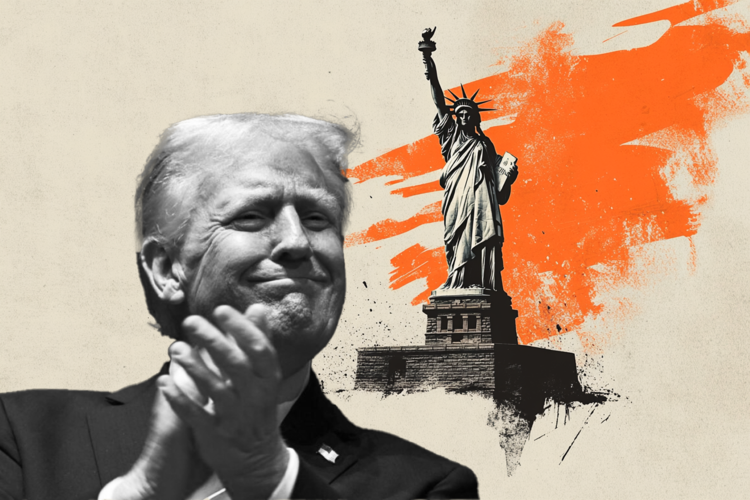- The US Dollar is trading in the green this morning on a safe haven flight.
- Investors are awaiting statements from Fed Chairman Jerome Powell.
- The Dollar Index remains above 105 after a brief break on Tuesday.
The Dollar faces the moment of truth, since the president of the United States Federal Reserve (Fed), Jerome Powell, will speak this Wednesday. Although no increases are expected, there is a lot at stake. The latest data not only shows a rebound in economic activity and the strength of the US labor market, but inflationary pressures are beginning to gain momentum again.
As if Powell didn’t have a difficult enough job, the current inflationary pressure is coming from the energy market. The Energy sector is a corner of the inflation basket over which the Fed has no control, other than triggering a recession that would wipe out any additional business demand for energy. A hawkish pause is necessary, as markets will want to see if the Fed is in a better position to carry it out, following the dismal performance of European Central Bank (ECB) President Christine Lagarde last week. .
Daily summary: The Dollar faces the moment of truth for its recovery
- The Thai Baht falls 1% against the Dollar in Asian trade.
- A sharp decline is expected in the markets during the European session and until 18:00 GMT. The Fed will first communicate its decision on interest rates, which are expected to remain unchanged at 5.5%. There will also be a joint statement at the time of fee communication.
- The dot-plot (Phillips curve) will also be communicated in the statement. All Fed members who voted at the September meeting will have the opportunity to signal where rates will be in the coming months and years. In this way, a consensus can be reached on the level that the Fed considers necessary to reach and the time that rates will remain unchanged.
- Thirty minutes later, at 18:30 GMT, Jerome Powell will take the stand and explain why the Fed has raised rates or paused. This will be the crucial moment if Powell is able to convey to markets the expected hawkish message that the Fed will not relent in its efforts to control inflation.
- Stocks in the red again this Wednesday as there is no escaping the negative mood stock markets are in this week. The Hang Seng Index and Shanghai CSI 300 Index are currently reporting negative results so far this year, negating any gains for 2023 as a whole.
- CME Group’s FedWatch tool shows that markets are 99% pricing in the likelihood that the Federal Reserve will keep interest rates unchanged at its September meeting. However, traders will need to keep an eye on any hawkish speech from Powell as inflation has been rising recently.
- The 10-year US Treasury yield is trading at 4.36% and peaked on Tuesday. Yields are rising again, after the flight to safety did the opposite, with bond prices rising.
Technical analysis of the Dollar Index: Starting over
The US dollar faced some selling pressure this week, with market participants unwinding some of their long dollar positions and others trying to position themselves in advance for this Wednesday’s main event. The fact that the Dollar Index (DXY) has been able to stay above 105, even with a brief break, points to the importance of the level.
A binary outcome is expected, with the DXY potentially hitting new yearly highs if Powell manages to deliver a hawkish message. If the markets perceive the message as moderate, the dollar’s summer recovery could come to an end by Thursday.
The Dollar Index (DXY) has risen to 105.41 points. It is just a breath away from the 2023 high, near 105.88. If the DXY manages to close the week above this level, the dollar is expected to strengthen further in the medium term.
On the downside, the 104.44 level seen on August 25 maintained support for the index on Monday, preventing further selling of the DXY. If the rally started on September 12 reverses and 104.44 gives way, there could be a major pullback to 103.04, where the 200-day SMA comes into play as support.
US Dollar FAQ
What is the US dollar?
The United States Dollar (USD) is the official currency of the United States of America, and the “de facto” currency of a significant number of other countries where it is in circulation alongside local banknotes. According to 2022 data, it is the most traded currency in the world, with more than 88% of all global currency exchange operations, equivalent to an average of $6.6 trillion in daily transactions.
After World War II, the USD took over from the Pound Sterling as the world’s reserve currency. For most of its history, the US dollar was backed by gold, until the Bretton Woods Agreement of 1971, when the gold standard disappeared.
How do Federal Reserve decisions affect the dollar?
The single most important factor influencing the value of the US dollar is monetary policy, which is determined by the Federal Reserve (Fed). The Fed has two mandates: achieve price stability (control inflation) and promote full employment. Your main tool to achieve these two objectives is to adjust interest rates.
When prices rise too quickly and inflation exceeds the 2% target set by the Fed, it raises rates, which favors the price of the Dollar. When Inflation falls below 2% or the unemployment rate is too high, the Fed can lower interest rates, which weighs on the Dollar.
What is Quantitative Easing and how does it influence the Dollar?
In extreme situations, the Federal Reserve can also print more dollars and enact quantitative easing (QE). QE is the process by which the Fed substantially increases the flow of credit into a clogged financial system.
This is an unconventional policy measure used when credit has dried up because banks do not lend to each other (for fear of counterparty default). It is a last resort when a simple lowering of interest rates is unlikely to achieve the necessary result. It was the Fed’s weapon of choice to combat the credit crunch that occurred during the Great Financial Crisis of 2008. It involves the Fed printing more dollars and using them to buy US government bonds, primarily from financial institutions. QE usually leads to a weakening of the US dollar.
What is quantitative tightening and how does it influence the US dollar?
Quantitative tightening (QT) is the reverse process by which the Federal Reserve stops purchasing bonds from financial institutions and does not reinvest the principal of maturing portfolio securities in new purchases. It is usually positive for the US dollar.
Source: Fx Street
I am Joshua Winder, a senior-level journalist and editor at World Stock Market. I specialize in covering news related to the stock market and economic trends. With more than 8 years of experience in this field, I have become an expert in financial reporting.







